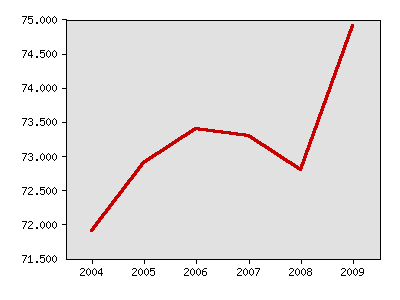Indicator 10: High School Graduation


Graduation rates were compiled by Twin Cities Compass and reflect the requirement of Adequate Yearly Progress measurements under the No Child Left Behind Act. Further information may be found at http://www.ed.gov/policy/elsec/guid/hsgrguidance.pdf
The rate presented here is the new Four-Year Graduation Rate that will become the official Adequate Yearly Progress rate beginning in the 2010-2011 school year. This rate considers first time ninth grade students in the cohort, adds students transferring into the cohort, subtracts students transferring out of the cohort, and computes how many graduate “on-time” (within four years). This new Four-Year on-time Graduation Rate will eventually allow for state and national comparisons of graduation rates, once all states implement the uniform methodology.

| Year | Data |
|---|---|
| Percent of students graduating from high school on time, Minnesota Department of Education | |
| 2004 | 71.9% |
| 2005 | 72.9% |
| 2006 | 73.4% |
| 2007 | 73.3% |
| 2008 | 72.8% |
| 2009 | 74.9% |
- Minnesota Department of Education, http://www.education.state.mn.us/MDE/Data/Data_Downloads/index.html
- Twin Cities Compass, http://www.tccompass.org/




